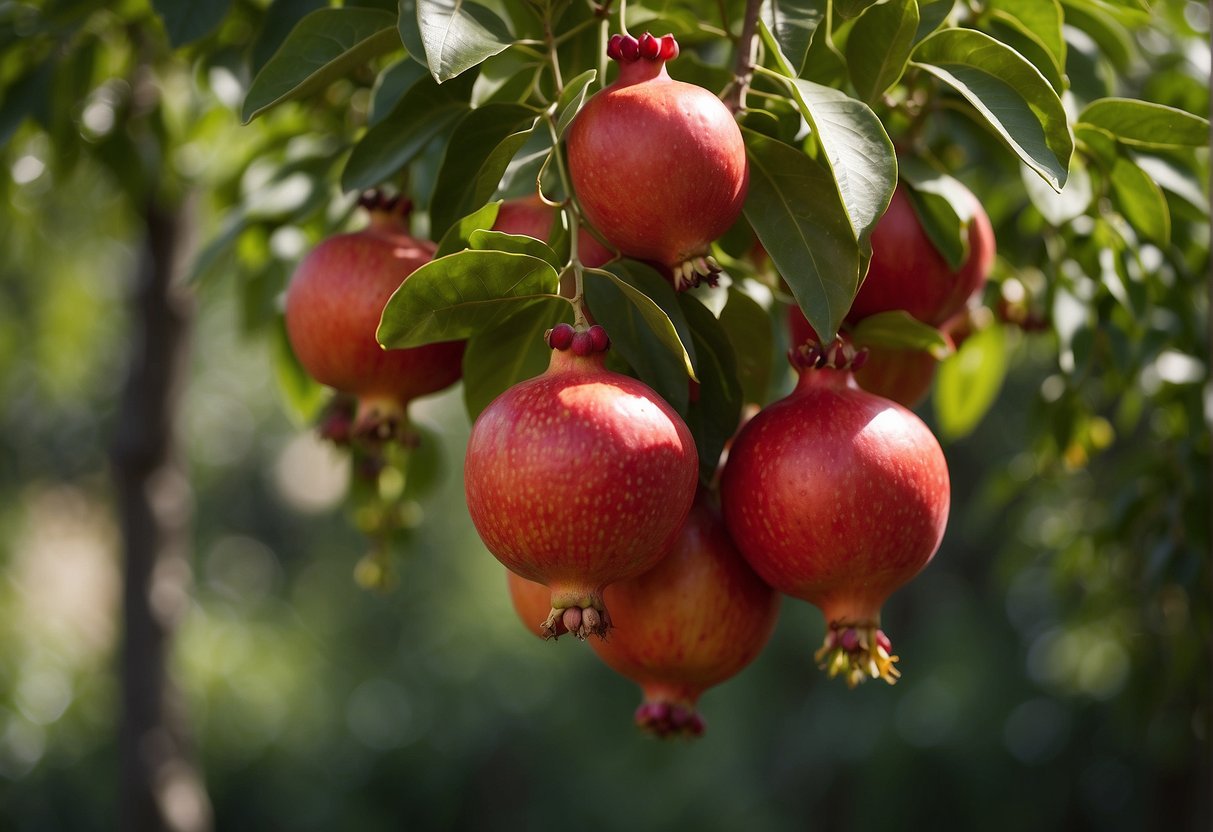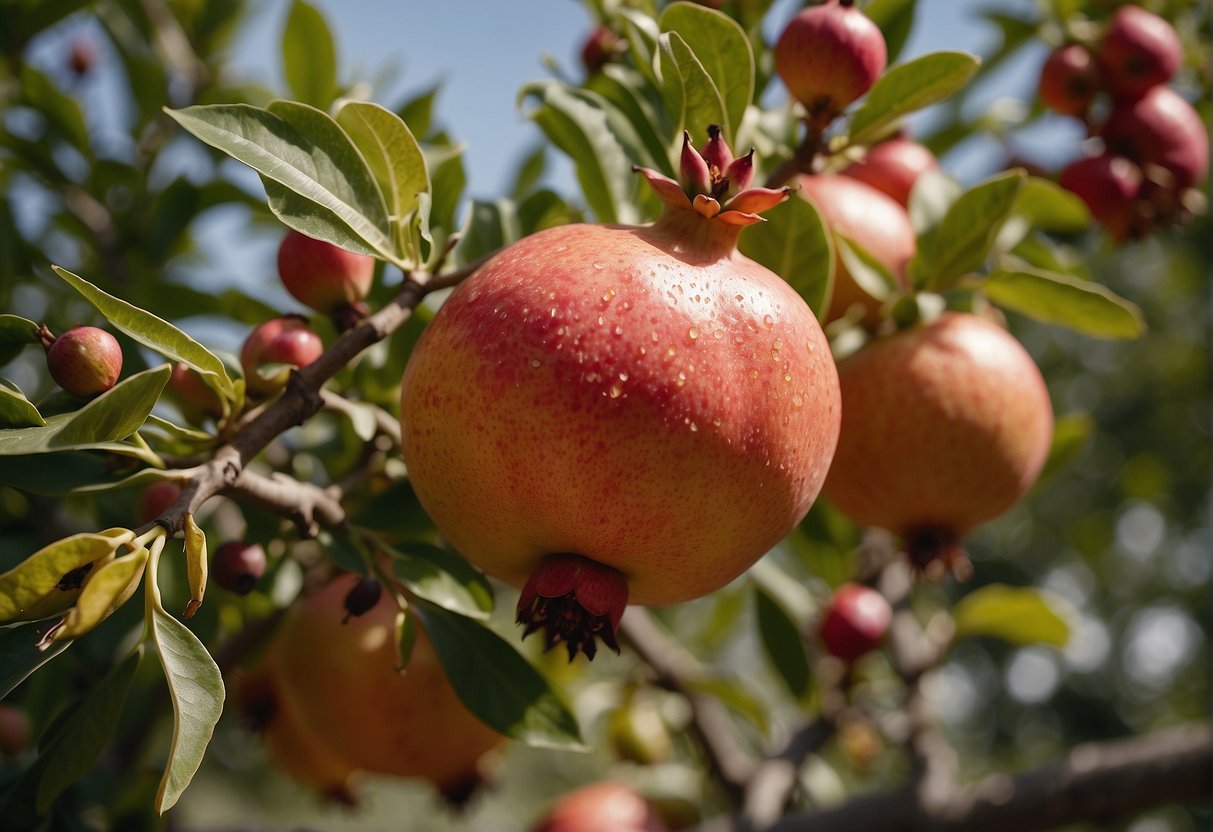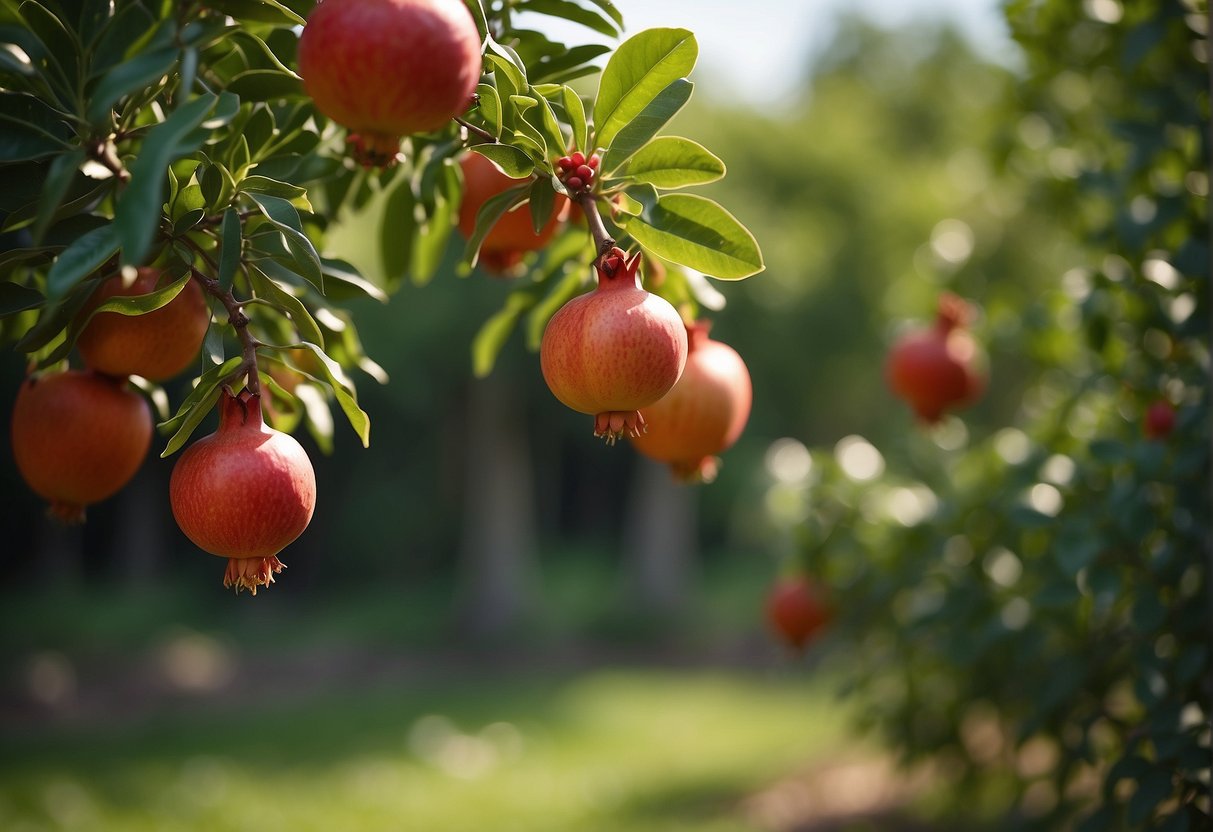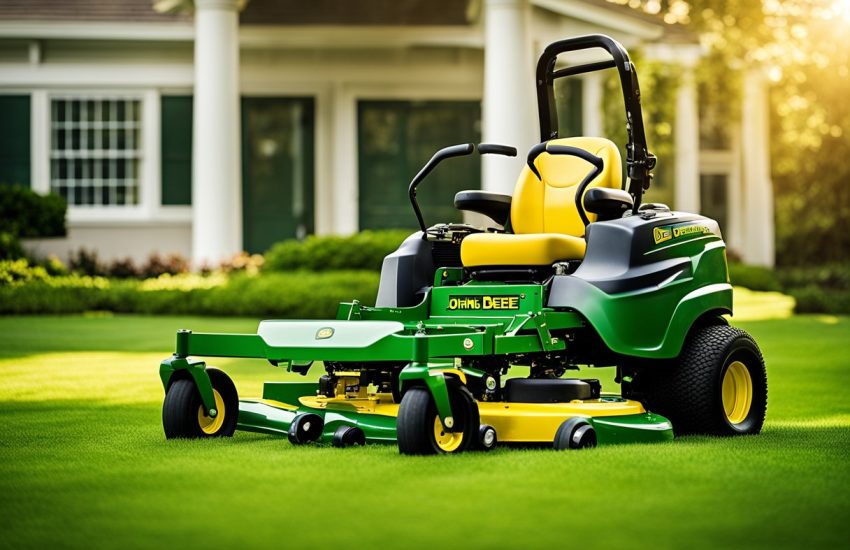How Do Pomegranates Grow: A Comprehensive Guide
Pomegranates are a unique and delicious fruit that have gained popularity in recent years due to their health benefits and versatility in cooking. But have you ever wondered how these delectable fruits grow? In this article, we will explore the fascinating process of pomegranate growth, from seed to fruit.

Pomegranates are grown on trees that can reach up to 20 feet tall. These trees are native to the Middle East but are now grown in many parts of the world, including California, Arizona, and Spain. The pomegranate tree is deciduous, meaning it sheds its leaves annually, and produces beautiful bright red flowers in the spring.
The fruit of the pomegranate tree is a round, leathery-skinned berry that is filled with juicy, edible seeds. Each fruit can contain hundreds of these seeds, which are surrounded by a sweet, tart, and slightly acidic pulp. Pomegranates are typically harvested in the fall, when the fruit is fully ripe and has developed its characteristic deep red color.
Pomegranate Varieties
Pomegranates are grown in many different varieties, each with its unique characteristics. Some of the most popular pomegranate varieties are discussed below.
Dwarf Varieties
Dwarf pomegranates are ideal for growing in small gardens or containers. These varieties have a compact growth habit and produce smaller fruits. One of the most popular dwarf varieties is the ‘Nana’ pomegranate, which is known for its ornamental value and small size. ‘Nana’ pomegranate produces small, bright red flowers and small fruits that are about the size of a cherry.
Commercial Cultivars
Commercial cultivars are grown on a large scale for their fruit production. The ‘Wonderful’ pomegranate is one of the most popular commercial cultivars, known for its large, deep red fruits that are sweet and juicy. This variety is widely grown in California and is exported to different parts of the world.
Other popular commercial cultivars include ‘Haku Botan’, ‘Ambrosia’, and ‘Eversweet’. These varieties are known for their large fruits, sweet flavor, and high juice content.
In conclusion, pomegranates are grown in many different varieties, each with its unique characteristics. Whether you are looking for an ornamental plant or a fruit-bearing tree, there is a pomegranate variety that will suit your needs.
Cultivation Requirements
Soil Conditions
Pomegranates thrive in well-drained soil with a pH range of 5.5 to 7.5. They can tolerate a wide range of soils, including sandy, loamy, and clay soils. However, the soil should not be waterlogged, as this can lead to root rot. Before planting, it is recommended to amend the soil with organic matter, such as compost or well-rotted manure, to improve soil structure and fertility.
Climate and Temperature
Pomegranates are native to the Mediterranean region and prefer a warm, dry climate. They can tolerate temperatures as low as 12°F (-11°C) and as high as 104°F (40°C). However, they require a certain amount of chilling hours (hours below 45°F or 7°C) to break dormancy and produce fruit. The required number of chilling hours varies depending on the cultivar. Pomegranates can be grown in USDA Zones 7-11.
Sunlight and Placement
Pomegranates require full sun exposure to produce high-quality fruit. They should be planted in a location that receives at least 6-8 hours of direct sunlight per day. Pomegranates can be grown as a tree or a shrub, depending on the desired shape and size. They are also suitable for container gardening, as long as the container is large enough to accommodate the root system. When planting, the distance between trees should be at least 12-15 feet (3.7-4.6 meters) to allow for proper growth and development.
Planting and Propagation

Pomegranates can be propagated through seeds, cuttings, and grafting. Each method has its own advantages and disadvantages, and the choice depends on the grower’s preference and experience.
Seed Planting
Planting pomegranate seeds is the easiest and most affordable way to propagate the fruit. The seeds should be extracted from ripe fruits and cleaned thoroughly before planting. They should be planted in well-draining soil and kept moist until they germinate, which can take up to a month. Seedlings can take up to four years to bear fruit, and the quality of the fruit may vary.
Cuttings and Grafting
Cuttings and grafting are more advanced propagation techniques that require more skill and knowledge. Cuttings are taken from mature trees and planted in moist soil until they develop roots. Grafting involves attaching a cutting to a rootstock of a different tree to create a new tree with desired characteristics. These methods can produce fruit in as little as two years, and the quality of the fruit is more consistent.
Container Planting
Pomegranates can also be grown in containers, which is ideal for growers with limited space or harsh climates. The container should be at least 18 inches in diameter and filled with well-draining soil. The tree should be pruned regularly to maintain its size and shape. Container-grown trees may require more frequent watering and fertilization than those grown in the ground.
Overall, pomegranates are relatively easy to propagate and can be grown in various ways to suit different needs. Whether planting from seeds, cuttings, or grafting, or growing in containers, the key is to provide the tree with the right conditions and care to ensure healthy growth and fruit production.
Care and Maintenance

Growing pomegranates requires a bit of care and maintenance to ensure a healthy and productive tree. Proper watering, fertilization, pruning, and pest and disease management are all essential for the tree’s well-being.
Watering and Fertilization
Pomegranate trees require regular watering, especially during the hot summer months. It is recommended to water deeply once a week, rather than shallowly more often. This helps to encourage deep root growth and ensures the tree has access to enough water.
Fertilization is also important for pomegranate trees. A balanced fertilizer with equal parts nitrogen, phosphorus, and potassium should be applied in the early spring and late summer. Be sure not to over-fertilize, as this can lead to excessive growth and reduced fruit production.
Pruning and Training
Pruning and training are essential for shaping the tree and ensuring proper fruit production. Pomegranate trees should be pruned in the late winter or early spring while they are still dormant. Remove any dead or diseased branches, as well as any suckers that grow from the base of the tree.
To train the tree, select a single trunk and remove any competing branches. As the tree grows, prune it to maintain a balanced shape and to encourage fruit production.
Pest and Disease Management
Pomegranate trees are generally hardy and resistant to pests and diseases. However, they can still be vulnerable to certain issues such as aphids, whiteflies, and fungal diseases.
To prevent pest and disease problems, it is important to keep the tree healthy through proper watering, fertilization, and pruning. If an issue does arise, it can often be treated with organic methods such as neem oil or insecticidal soap.
Overall, with proper care and maintenance, pomegranate trees can thrive and produce delicious fruit for years to come.
Harvesting and Usage

Harvesting Time and Techniques
Pomegranate trees usually start producing fruit after 3 to 4 years of planting. The fruit ripens from late summer to early fall, depending on the variety and location. The ideal time to harvest pomegranates is when they are fully ripe, which is indicated by their color and sound. Ripe pomegranates have a deep red color and make a metallic sound when tapped.
Harvesting pomegranates is relatively easy. The fruit can be picked by hand or with the help of pruning shears. To avoid damaging the fruit, it is recommended to cut the stem about an inch above the calyx, which is the crown-like structure at the top of the fruit.
Post-Harvest Handling
Pomegranates are delicate fruits that require careful handling to maintain their quality and freshness. After harvesting, the fruit should be stored in a cool, dry place away from direct sunlight. Pomegranates can be stored for up to two months if kept at a temperature of 32 to 41°F and a relative humidity of 80 to 85%.
To prepare pomegranates for consumption, the fruit should be washed and cut open. The arils, which are the juicy red seeds inside the fruit, can be removed by hand or with the help of a spoon. The white membrane surrounding the arils should be removed, as it is bitter and inedible.
Culinary and Other Uses
Pomegranates are versatile fruits that can be used in a variety of culinary and non-culinary applications. The juice of pomegranates is a popular ingredient in many recipes, including marinades, dressings, and sauces. Pomegranate arils can be added to salads, desserts, and cocktails for a burst of flavor and color.
In addition to their culinary uses, pomegranates are also used in traditional medicine and cosmetics. Pomegranate tea, which is made from the dried leaves and flowers of the plant, is believed to have health benefits, including reducing inflammation and improving digestion. Pomegranate extract is also a common ingredient in skincare products, as it is believed to have anti-aging and antioxidant properties.
Frequently Asked Questions

What is the process for growing pomegranate trees from seed?
Growing pomegranate trees from seeds is a straightforward process. First, remove the seeds from a ripe pomegranate fruit and rinse them thoroughly. Then, plant the seeds in a well-draining soil mix and water them regularly. The seeds will germinate in a few weeks, and the seedlings can be transplanted to a larger pot or directly into the ground.
Can pomegranate trees be cultivated in containers, and if so, how?
Yes, pomegranate trees can be grown in containers. Choose a large pot with good drainage and fill it with a well-draining soil mix. Plant the tree in the center of the pot and water it regularly. Prune the tree to keep its size manageable, and fertilize it during the growing season.
What are the various growth stages of a pomegranate tree?
Pomegranate trees go through several growth stages, including seed germination, seedling growth, juvenile growth, and mature growth. During the juvenile stage, the tree produces few flowers and fruits. The mature stage is when the tree is fully grown and produces abundant fruits.
How much height can a pomegranate tree reach at maturity?
Pomegranate trees can grow up to 20 feet tall at maturity, but their height can be controlled through pruning. Most commercial orchards keep the tree height around 12 feet for ease of harvesting.
What is the typical time frame for a pomegranate tree to start bearing fruit?
Pomegranate trees usually start bearing fruit in their third or fourth year of growth. However, the fruit yield increases with the age of the tree, and it can take up to six years for the tree to reach its full fruit-bearing potential.
In which climate zones do pomegranate trees thrive?
Pomegranate trees thrive in warm, dry climates with hot summers and mild winters. They can tolerate temperatures as low as 10°F but prefer temperatures between 40°F and 85°F. The ideal USDA hardiness zones for pomegranate cultivation are 7 to 11.

